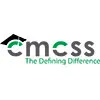
Clarksville-Montgomery County School System
Clarksville, TN
Serving Montgomery County, Tennessee, CMCSS includes 43 schools and more than 37,000 students. The district’s mission is to educate and empower students to reach their potential.
Educators in Clarksville-Montgomery County School System (CMCSS) believe that every student has a story. And that story can tell them a lot about the student’s academic needs.
CMCSS is also the seventh largest district in Tennessee and, on average, nine new students enter the school system every day. Capturing the right data to piece together the unique stories for each of the district’s 37,000 students is a significant challenge—and educators have learned that not all assessment solutions are up to the task.
FastBridge, which combines screening and progress monitoring across reading, math, and social-emotional behavior (SEB), has proven that it is. SEB assessments from FastBridge are helping CMCSS to understand students’ full data stories so that educators can provide stronger, more strategic academic and SEB supports throughout the year.
THE CHALLENGE
Improving insight into students’ SEB needs
CMCSS, like all districts in Tennessee, uses a Response to Intervention (RtI) framework that includes both academics and behavior data. In 2018–2019, the district updated its strategic plan to reflect this, including a goal to provide students with more SEB supports to improve achievement.
During the 2019–2020 school year, CMCSS is partnering with the Tennessee Behavior Supports Project, a program funded by the Tennessee Department of Education, to pilot explicit social-emotional learning (SEL) programming in 10 schools. The district is also expanding SEL supports to students through collaboration with school counselors.
“This is new to our strategic plan this year,” says Patti Wilson, district Response to Instruction and Intervention Coordinator. “When looking at improving our access to social-emotional resources, this is our year to hit the ground running and put into place all of the supports we need.”
One of the resources the district required was an assessment solution that could provide robust and reliable data around academics as well as SEB skills. The data provided by their previous assessment solution simply could not capture a student’s whole story in a single, integrated system.
“The reports were not as specific as we wanted,” Wilson explains. “We’re a data-rich district. If we’re going to take time for students to take an assessment, we want to make sure the data we receive can be used in a productive way to drive instruction and intervention. And our previous system was solely academic based. We didn’t have anything to look at in terms of SEL or behavior. This was a huge issue for us, because it meant that we were spreading ourselves across multiple platforms.”
THE SOLUTION
Finding—and piloting—an integrated assessment platform
The district began researching assessment solutions that could improve efficiency and integrate as many of its embedded practices as possible, including SEL. FastBridge immediately stood apart for a number of reasons, from its research-based assessments and comprehensive reporting to ease of use and excellent customer service. Plus, FastBridge is the first and only assessment tool to include SEB measures alongside reading and math.
Specifically, FastBridge includes the Social, Academic, and Emotional Behavior Risk Screener, or SAEBRS, which is completed by teachers to identify K–12 students who are at risk with regard to academic, social, and/or emotional behaviors. When students complete the accompanying mySAEBRS, teachers can compare their ratings with each student’s perceived ratings of their own skills.
CMCSS piloted SAEBRS and mySAEBRS in 2018–19, starting in a single middle school with:
- A highly diverse student population
- High percentages of transient and economically marginalized students
- A need for positive behavior supports due to a high number of behavior referrals and write-ups
Additionally, a middle school was chosen for piloting behavior screening because the data would help with transition planning for students entering high school.
“The school counselors were searching for a way to better support students, and once I presented FastBridge to those counselors and the school leadership team, they were sold immediately,” Wilson says. “Once they saw the data they could get, it was all about functionality: ‘How soon can we do it?’ ‘How quickly can we get results?’ It really spread like wildfire.”
The school counselors were searching for a way to better support students, and once I presented FastBridge to those counselors and the school leadership team, they were sold immediately.
Patti Wilson, RtI Coordinator, CMCSS
Leaders from many of the district’s other schools desired the same actionable SEB data to inform supports for new students entering their buildings. By spring 2019, thanks to the benefits they were already seeing, CMCSS began administering FastBridge SEB assessments to all rising 6th grade and 9th grade students. By fall of 2019–20, they decided to include every K–8 student in the district in the screening.
District leaders were excited about this expansion. The assessments fit directly into their strategic work, supported overall SEL initiatives, and aligned with CMCSS’ broader RtI framework. However, there were some initial concerns about how teachers might react.
“We were a little worried, because this was going to be one more thing we were going to ask teachers to do. But we didn’t have those barriers,” Wilson says. “Teachers were excited to have both a teacher and student perspective of behavior and appreciated that the assessments weren’t time consuming.”
Wilson adds that education was critical to a successful district-wide implementation. Not only did the district provide background and training to teachers, it also created a presentation explaining the mySAEBRS screener to students, including what it is, how to complete it, and how teachers would use the results.
“I think sometimes people forget that students are humans who thrive on the purpose of what they’re doing,” Wilson says. “They need to understand the why.”
PROVIDING EFFECTIVE SUPPORTS
Applying SEB data to improve student outcomes
Wilson says SAEBRS and mySAEBRS screening data is not only informing district-level planning, but also making a difference at the student level. Each component of the measures offers meaningful insights for various planning areas:
- Data from SAEBRS’ Social scale helps educators strategically place students who require additional structure. This data also guides professional development for teachers who are paired with these students so they are prepared for possible challenges.
- SAEBRS’ Academic scale data helps educators match students who struggle in areas like time and task management with teachers who purposefully and seamlessly integrate executive functioning skills into content teaching.
- CMCSS’ counselors and social workers utilize SAEBRS’ Emotional scale data to select and plan small-group and one-on-one counseling opportunities. This data also provides additional insight for teacher observations, parent and/or student referrals, attendance, grades, and more, helping determine the “why” behind student skill deficits.
Especially beneficial to CMCSS is that this SEB data exists in one system and can be viewed alongside math and reading reports to identify supports that will nurture the whole student.
“To have this data on one platform, in a single data warehouse, is fantastic,” Wilson says. “A lot of times, when behavior is separate from academics, people believe that behavior is something other than a skill. But behavior is a skill. It’s something we need to focus on improving and growing, just like we look at improving and growing academic gifts.”
Behavior is a skill. It’s something we need to focus on improving and growing, just like we look at improving and growing academic gifts.
Patti Wilson, RtI Coordinator, CMCSS
LOOKING AHEAD
Getting the whole story for every learner
Educators at CMCSS want to know every student’s whole data story—not just a single data point. By utilizing FastBridge SEB measures in tandem with its academic measures for screening and progress monitoring, those stories are finally being told.
“Analyzing data from SAEBRS and mySAEBRS behavior screening, and pairing that with all our data sources, has helped our teams discover the possible ‘why’ behind the ‘what,’” Wilson explains. “It’s one thing to look at grades and see a student is struggling across most content areas. But when you’re able to piece together additional pieces of that data story—that they lack readiness skills or have difficulty with sustained attention and initial engagement—that informs the type of intervention needed.
“This same academic score profile could exist for five students, and all for very different reasons,” Wilson continues. “FastBridge assessments offer additional pieces to add to a student’s data story, and we want to fill in as many missing pieces as we can so our supports are strategic and targeted.”
Learn more
Interested in learning more about FastBridge or other Renaissance solutions to support the whole child? Connect with an expert today to get started.

